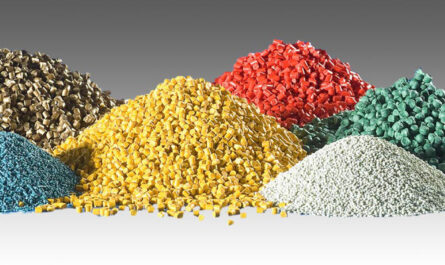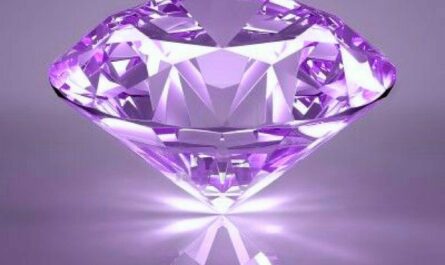Polyvinyl Chloride: A Versatile and Widely Used Synthetic Material
Introduction to PVC
Polyvinyl chloride, commonly abbreviated as PVC, is one of the most widely used types of synthetic plastic polymer. It was first created in the year 1872 yet has only been mass-produced since the 1930s. PVC has the third highest production volume of any synthetic plastic polymer. Only polyethylene and polypropylene are produced in larger amounts than PVC.
PVC is made through the polymerization of vinyl chloride monomer molecules. During the manufacturing process, many vinyl chloride monomers are bonded together to form a long chain-like plastic polymer called polyvinyl chloride. The addition of various additives and fillers allows PVC to be tailored for different applications by modifying its physical properties. PVC is an inexpensive plastic that is rigid and durable yet also lightweight. It is also resistant to many chemicals, water, and fire. These qualities have led to the wide usage of PVC across many industries.
Common Uses of PVC
Pipes and Fittings
Due to its strength, durability, and chemical resistance, PVC is commonly used for the production of pipes and fittings for water distribution, sewer, and drainage systems. Around 40% of the total global PVC production goes into making pipes and fittings. These are inexpensive and easily assembled using solvent cement or heat fusion welding. PVC pipes are lightweight and easy to install compared to traditional metal pipes.
Windows and Doors
Window frames, door frames, and window and door profiles are often made from rigid PVC. This application exploits PVC’s excellent durability and weather resistance as well as its low maintenance requirements. PVC window profiles do not dent, corrode, or rust like aluminum or steel. PVC windows and doors also provide insulation against heat/cold transfer and have customizable colors.
Cables and Wires
The jacketing on power cables, telephone cables, ethernet cables, and other wiring is made using flexible PVC due to its dielectric and flame-retardant properties. PVC film insulation allows wires to be safely bundled together without risk of short circuits between lines. These cables also retain their flexibility across a wide temperature range.
Flooring
Due to the ease of installation and low maintenance needs, vinyl flooring using plasticized PVC is widely used for both commercial and residential purposes. It comes in the form of floor tiles or rolled/loose-lay flooring. A huge variety of patterns, textures, and colors are available with luxury vinyl tiles being indistinguishable from real hardwood or ceramic tiles. Vinyl flooring is waterproof, durable, and comfortable.
Profiles and Sheets
rigid PVC sheets and profiles find usage across many industries. Common applications are signs, billboards, displays, and architectural trims/mouldings. PVC-U sheets are also used as roofing and siding materials due to their weather resistance and long lifespan. Profiles can be easily joined, cut and thermoformed into complex architectural designs.
Health and Environmental Impacts
While PVC offers advantages that have resulted in its heavy usage, there are also ongoing debates around its health and environmental impacts:
Volatile Organic Compounds (VOCs): PVC processing involves the use of numerous additives that may release VOCs, some of which are hazardous air pollutants. Improper disposal of PVC products through incineration also releases VOCs and dioxins into the air and soil.
Plasticizer Leaching: The phthalate plasticizers added to soften rigid PVC have been linked to hormone disruption, reproductive toxicity, and developmental issues in children. Over time, these plasticizers can leach out of products.
Difficult to Recycle: Recycling of PVC requires complex processing to separate it from other recyclables and to remove hazardous additives through expensive dechlorination. Very little used PVC is actually recycled due to high costs involved.
PVC Alternatives
While PVC possesses useful qualities, researchers continue exploring safer and more sustainable plastic alternatives to reduce environmental and health risks:
Bioplastics: Natural polymers like polylactic acid (PLA) made from corn and other plant starches are bio-based alternatives to conventional plastics like PVC.
Thermoplastic Elastomers: Thermoplastic polyolefins (TPO), thermoplastic vulcanizates (TPV), and thermoplastic urethanes (TPU) can emulate PVC’s characteristics without use of hazardous plasticizers.
Polyethylene (PE): HDPE and LLDPE can work as a safer alternative in certain non-flexible applications like rigid pipes currently dominated by PVC.
New Additive Technologies: Innovations in non-phthalate, bio-based plasticizers and new flame retardants aim to reduce leaching and increase recyclability of conventional plastics.
Conclusion
In conclusion, polyvinyl chloride has become a ubiquitous material due to its versatile properties and low cost. However, ongoing toxicity debates underscore the need for progressive sustainable alternatives that can minimize environmental and health impacts without compromising on performance. Researchers continue advancing new bio-based and next-generation plastic technologies to help phase out problematic substances like plasticized PVC for a greener future.




